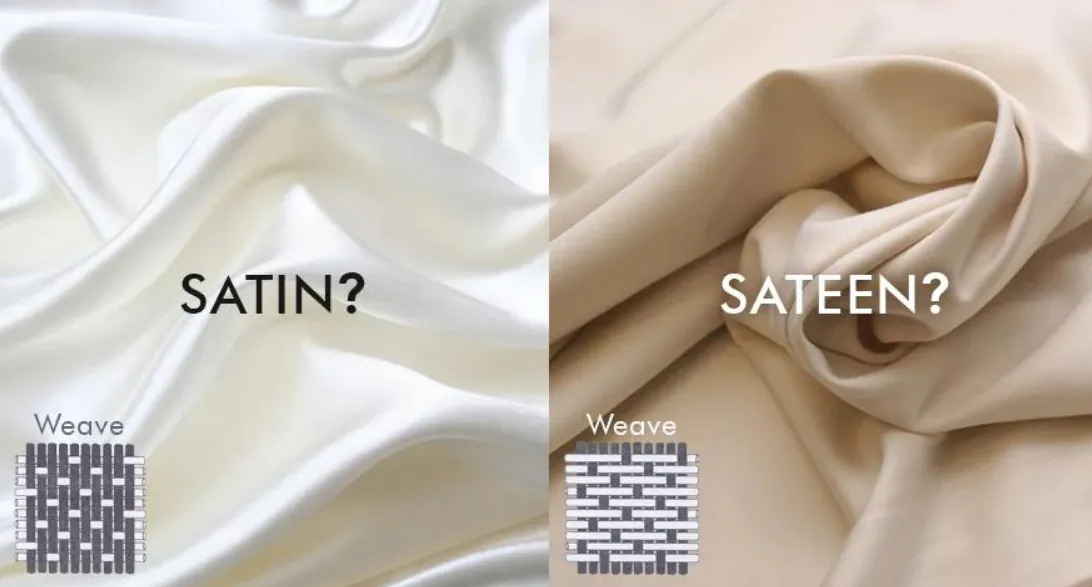
When it comes to fabric selection, satin and sateen are often confused due to their similar appearance and luxurious feel. Both fabrics have a shiny, smooth surface that is commonly used for clothing, bedding, and home decor, but there are key differences between the two. Understanding these differences can help you choose the right fabric for your needs, whether you're creating a stunning garment or looking for elegant textiles to decorate your home.
If you're looking for a sustainable, affordable way to source deadstock satin or sateen fabrics, visit Recovo's marketplace. Recovo offers a wide range of high-quality materials that are perfect for eco-conscious designers and businesses.
Satin is a type of weave that creates a smooth, glossy surface on one side of the fabric, while the other side is typically duller. Traditionally, satin was made from silk, but today it can be made from a variety of fibers, including polyester, nylon, and rayon. The weave structure of satin involves floating warp threads over weft threads, which gives the fabric its signature shine and soft texture.
Satin is known for its elegant drape and luxurious finish, making it a popular choice for formal wear, evening gowns, lingerie, and even upholstery. Because of its silky feel and light-reflecting properties, satin fabrics are often used in settings where a touch of glamour is desired. However, its delicate surface can be prone to snags and pulls, so satin requires careful handling and maintenance.
Sateen, on the other hand, is typically made from cotton or a blend of cotton and synthetic fibers. While it shares a similar shiny appearance with satin, the key difference lies in the weave and the fibers used. Sateen is made using a weft-faced weave, where the weft threads float over the warp threads, which gives it a lustrous finish. However, because sateen is made primarily from cotton, it has a softer and more durable feel compared to satin.
Sateen is often used in bedding, such as sheets and pillowcases, due to its smooth and comfortable texture. It's also more resistant to wear and tear, making it a better choice for everyday use compared to satin. Although it doesn’t have the same fluid drape as satin, sateen still offers a refined look, making it suitable for home decor and casual clothing items like blouses and skirts.
The primary differences between satin and sateen come down to the fiber content and weave. Satin can be made from various synthetic and natural fibers, while sateen is typically made from cotton. This difference in materials leads to distinct variations in texture, sheen, and durability.
When choosing between satin and sateen, consider the use and function of the fabric. If you're designing an item for special occasions or evening wear, satin's luxurious sheen and drape make it an excellent choice. For bedding, casual clothing, or items that require more durability, sateen is likely a better option.
Selecting between satin and sateen depends on the type of project you’re working on. For garments that require an elegant drape and a glossy finish, satin is the go-to fabric. Whether it's for a formal dress, lingerie, or even high-end home decor items like curtains, satin's rich sheen adds a sophisticated touch. However, because of its delicate nature, it may not be the best choice for everyday use.
Sateen, by contrast, is ideal for projects that prioritize comfort and durability. It’s a popular choice for bed linens due to its softness and resistance to pilling and wear. Sateen is also great for casual clothing or home textiles that need to withstand frequent use while still maintaining a polished appearance.
To source satin, sateen, or other deadstock fabrics smartly, affordably, and sustainably, visit Recovo's marketplace. With a vast selection of eco-friendly fabrics, Recovo is the perfect place to find the materials you need while supporting sustainable practices in the fashion and textile industries.
Recovo creates circular solutions for the fashion industry. We cover various aspects of the circular economy for brands:
Based in Barcelona, we have a global mission with our websites in Spanish, English, Portuguese, Italian, French, dutch, German
If you want to know more, please contact us